Tired of relying on over-the-counter pain relievers for temporary relief from chronic headaches? Imagine a life where you could say goodbye to the bustling temples and welcome a feeling of peace and quiet instead. Enter the world of yoga teacher training where you can not only deepen your understanding of yoga but also discover the secrets to reducing headaches.
In this transformational journey, you will learn how to use various yoga techniques and poses to reduce stress, improve circulation, and release tension that has built up in the body. Led by experienced instructors, this yoga teacher training will equip you with the tools and knowledge to help others find comfort in their battle with headaches.
Whether you are a yoga enthusiast looking to step up your practice or someone looking for a natural and holistic approach to headache relief, this yoga teacher training course is the gateway to all. to a life free from the chains of chronic pain. Say goodbye to headaches and embrace a future filled with peace and happiness.
Understanding the causes of headaches
Headaches can be debilitating and affect our productivity, mood, and overall quality of life. Understanding the cause of a headache is the first step to effective pain relief. While there can be many different headache triggers, some common culprits include stress, tension, poor posture, dehydration, and lack of sleep.
In addition, certain medical conditions and hormonal imbalances can also contribute to chronic headaches. By identifying the underlying cause of your headaches, you can better tailor your yoga teacher training practice to address those specific issues, providing long-term relief. One of The main benefits of yoga are its ability to reduce stress and pressure in the body.
Stress is a major cause of headaches because it causes muscle tension and constriction of blood vessels in the head and neck. Through the practice of yoga, you can learn to relax and release the physical and mental stress that often accompanies headaches.
By combining specific yoga poses, breathing techniques, and meditation, you can create a holistic headache remedy that not only treats the symptoms but also addresses the root causes.
In addition to reducing stress, yoga can also improve circulation, which is crucial for reducing headaches. Poor circulation can lead to a lack of oxygen and nutrients to the brain, causing headaches. Yoga poses that involve gentle twists, forward bends, and inversions can help improve blood and oxygen flow to the brain. By incorporating these poses into your practice, you can improve blood circulation to your head and reduce headache symptoms.
How yoga can provide headache relief
Yoga is a powerful tool that can provide natural and effective relief headaches. Its holistic approach addresses both the physical and mental aspects of headache management, making it a comprehensive solution for long-term relief. Here’s how yoga can help:
-
Alleviating tension and stress: Yoga poses, in yoga teacher training in India such as Child’s Pose, Cat, and Leaning Forward, can help release tension in the neck, shoulders, and upper back areas that often build up tension and contribute to headaches. . These poses stretch and relax the muscles, promoting feelings of ease and relief. Additionally, practicing yoga regularly can improve your overall stress response, help you manage stress more effectively, and reduce the frequency and intensity of headaches.
-
Improving circulation: Some yoga poses, such as downward facing dog, legs against the wall, and shoulder pose, promote blood circulation in the head and neck area. These poses encourage the circulation of fresh, oxygenated blood, which helps relieve headache symptoms. By regularly practicing these poses, you can improve the overall blood circulation in your body, thereby reducing the occurrence of headaches.
-
Releasing built-up stress and emotions: Headaches can be the result of emotional stress and tension stored in the body. Yoga provides a safe and supportive space to release those pent-up emotions, allowing for healing and emotional release. Through mindful breathing, meditation, and gentle movement, yoga helps release blocked emotions and promotes feelings of inner peace and happiness.
Breathing techniques to manage headaches
In addition to yoga postures, specific breathing techniques can also be beneficial for managing headaches. Deep, slow, and controlled breathing activates the parasympathetic nervous system, promoting relaxation and reducing stress. Here are two breathing techniques that can help alleviate headaches:
Nadi Shodhana (Alternate Nostril Breathing): Nadi Shodhana is a calming breath that balances the left and right hemispheres of the brain, promoting mental clarity and relaxation. To practice Nadi Shodhana, sit in a comfortable position with your spine straight. Using your right hand, bring your index and middle fingers between your eyebrows. Close the right nostril with the right thumb and inhale deeply through the left nostril. When the inhalation reaches its peak, close the left nostril with your ring finger and release your thumb from the right nostril. Exhale through the right nostril. Inhale through the right nostril, close the nostril with your thumb, and exhale through the left nostril. Continue this alternating pattern for several breaths, focusing on a steady, rhythmic flow of breath.
3 Part Breath (Dirga Pranayama): The 3-Part Breath is a calming and grounding breath that helps release tension and promote relaxation. To practice 3-Part Breath, sit in a comfortable position with your spine straight. Place one hand on your belly and the other on your chest. Inhale deeply through your nose, allowing your belly to rise and expand. Continue inhaling and let the breath fill your chest, feeling your ribcage expand. Finally, inhale a little more and let the breath fill your upper chest and collarbones. Exhale slowly and completely, reversing the process. Start by releasing the breath from your upper chest, then your ribcage, and finally your belly. Continue this deep, full breath for several rounds, focusing on the sensation of expansion and release.












